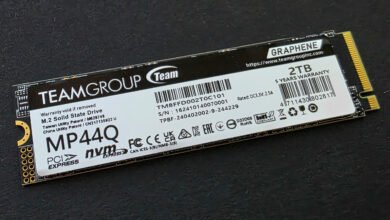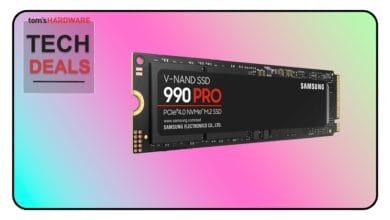WD Blue SN5100 2TB SSD Review: Speed, Value & Verdict

▼ Summary
– The Sandisk WD Blue SN5100 is a high-performing QLC SSD that redefines expectations for this type of flash memory, making it a great option for everyday users and storage enthusiasts.
– It marks a full transition from TLC to QLC flash for the Blue series, and its performance is so strong that it would be difficult to distinguish from the TLC-based Black SN7100 in a blind test for typical users.
– The drive is best suited as a secondary, game-focused, or budget laptop upgrade drive, but its power efficiency and low latency make it feel high-end and capable of working in many scenarios.
– A key drawback is its current pricing, which is higher than the superior TLC-based Black SN7100, making a future price reduction essential for it to be a compelling budget option.
– The SN5100 has half the write endurance (TBW) of comparable TLC drives, which is standard for QLC flash, but this limit is not expected to hinder its performance for its intended consumer uses.
The WD Blue SN5100 2TB SSD represents a significant step forward for QLC NAND technology, delivering performance that challenges many traditional TLC-based drives. It stands as a compelling option for everyday computing, gaming libraries, and budget-friendly storage upgrades. The drive’s strong showing suggests that QLC flash has matured considerably, offering a blend of speed and potential value that was hard to imagine just a generation ago.
Following the impressive performance of the Black SN7100 and SN8100, the Blue SN5100 elevates the mid-range segment. While the Blue line has always been popular for its affordability, the new model clearly differentiates itself. It fully embraces QLC flash across its capacity range, a move that might concern some enthusiasts but ultimately results in a drive that performs admirably for the vast majority of users. In many real-world scenarios, distinguishing its performance from a TLC drive like the Black SN7100 would be a challenge.
This drive is ideally suited as a secondary drive for games or as a cost-effective upgrade for a laptop. Its capabilities are robust enough that it could easily serve as a primary drive in many systems, effectively replacing lower-end TLC options. A key strength lies in its excellent power efficiency and low latency, which contribute to a responsive feel often associated with higher-priced models. The main hurdle currently is its market positioning relative to the sometimes cheaper Black SN7100. For the Blue SN5100 to fully realize its potential, its price point needs to settle below that of its TLC sibling.
Available in 500GB, 1TB, 2TB, and 4TB capacities, the drive delivers peak sequential read and write speeds up to 7,100 MB/s and 6,700 MB/s, with random performance reaching 1,000K/1,300K IOPS. The 1TB and 2TB models offer the best performance balance. It’s important to note the endurance rating, which is set at half the typical TBW of a comparable TLC drive. This is a standard characteristic of QLC NAND and is highly unlikely to impact the vast majority of consumers within the drive’s five-year warranty period.
The physical design is straightforward, featuring a single-sided M.2 2280 form factor with a DRAM-less controller that utilizes Host Memory Buffer (HMB). Sandisk provides useful software support through the SanDisk Dashboard for drive management and Acronis True Image for data migration and backup. A slight performance dip is observed in the 4TB capacity due to the higher density of NAND packages, a common trait among high-capacity SSDs.
The shift to QLC flash is the primary differentiator from the Black SN7100. In practice, the difference is often negligible for typical workloads. While QLC inherently has lower write endurance, the rated limits are still substantial for consumer use. The promise of QLC has always been lower cost, but high enterprise demand, particularly from AI and large language model applications, has kept prices elevated. The SN5100’s performance makes it a drive to watch, especially if its price becomes more aggressive. When that happens, it could easily become a top recommendation in the budget SSD space.
(Source: Tom’s Hardware)





